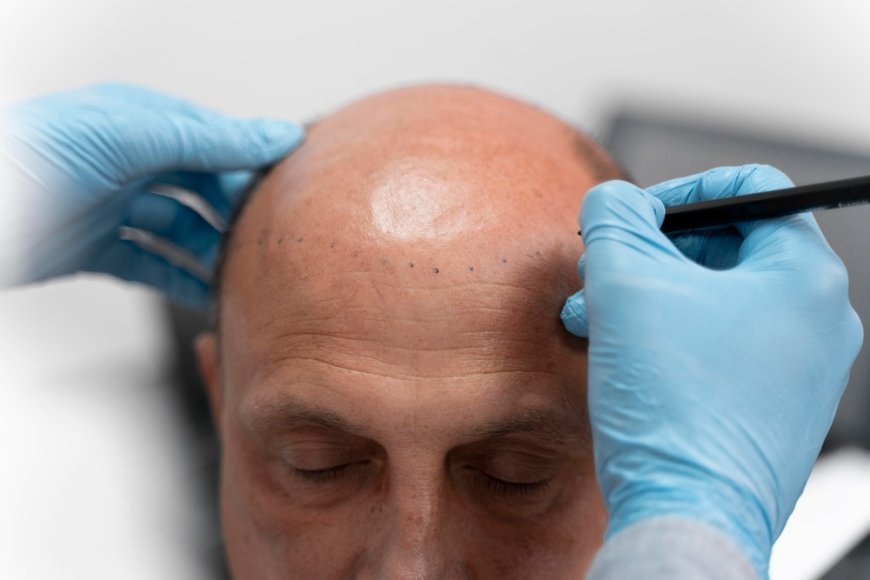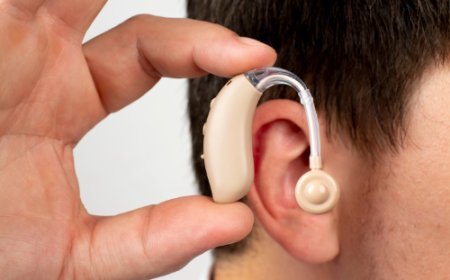The Science Behind Hair Transplant: How Does it Really Work?

Hair loss can be a distressing experience, impacting confidence and self-esteem. Fortunately, advancements in medical science have made hair transplants a highly effective solution for those looking to restore their natural hairline. But how do hair transplants actually work? This article delves into the science behind the procedure, exploring different techniques and the biology that makes hair restoration possible.
Understanding Hair Growth and Hair Loss
To comprehend how hair transplants work, it is essential to understand the natural hair growth cycle. Hair grows in cycles, consisting of three main phases:
-
Anagen (Growth Phase): This is the active phase where hair follicles produce hair. It typically lasts between 2 to 7 years.
-
Catagen (Transition Phase): This short phase (2-3 weeks) marks the end of active growth, and the hair follicle shrinks.
-
Telogen (Resting Phase): In this phase, hair stops growing and eventually sheds, making way for new hair growth.
Hair loss occurs when the natural cycle is disrupted, leading to excessive shedding and reduced regrowth. Genetic factors, hormonal changes, medical conditions, and lifestyle choices can all contribute to hair loss.
What is a Hair Transplant?
A hair transplant is a surgical procedure that involves moving hair follicles from a donor area (typically the back or sides of the scalp) to areas experiencing hair loss. The main objective is to restore natural hair growth in thinning or balding regions.
Hair transplants are primarily categorized into two major techniques: Follicular Unit Transplantation (FUT) and Follicular Unit Extraction (FUE).
Follicular Unit Transplantation (FUT) Hair Transplant
FUT, also known as the strip method, involves removing a thin strip of skin from the donor area. The strip is then dissected under a microscope to extract individual hair follicles, which are carefully implanted into the recipient area.
Process of FUT:
-
The surgeon extracts a strip of skin from the donor site.
-
The strip is divided into smaller follicular units.
-
Tiny incisions are made in the recipient area.
-
The follicular units are implanted strategically for natural growth.
-
The donor area is sutured, leaving a linear scar that can be concealed with surrounding hair.
FUT Hair Transplant is preferred for patients requiring a large number of grafts and offers high follicle survival rates due to minimal handling of grafts.
Follicular Unit Extraction (FUE) Hair Transplant
FUE is a minimally invasive procedure that involves extracting individual follicular units from the donor site using a micro-punch tool and implanting them into the recipient area.
Process of FUE:
-
The donor area is shaved to access hair follicles.
-
Each follicular unit is extracted individually using a specialized punch tool.
-
Small incisions are made in the balding area.
-
The harvested follicles are implanted into the recipient site.
FUE leaves no linear scar, making it a popular choice for individuals who prefer short hairstyles or those prone to scarring.
How Hair Transplants Work: The Science Explained
Hair transplants are successful due to the principle of donor dominance—a concept stating that hair follicles taken from the back or sides of the scalp retain their genetic resistance to balding, even after transplantation. This means that once implanted, the hair follicles continue to grow naturally in their new location.
During transplantation, careful attention is given to:
-
Graft survival: Proper extraction and implantation techniques ensure the follicles remain viable.
-
Angle and direction: Hair is implanted in a way that mimics natural growth patterns.
-
Density: Strategic placement creates a fuller, more natural appearance.
Types of Hair Transplants Beyond the Scalp
Hair transplants aren’t limited to scalp restoration. Advanced techniques allow for transplantation in other areas, such as:
Beard Transplant
A Beard transplant is a procedure that enhances facial hair density by implanting hair follicles into sparse or patchy areas. Similar to scalp hair transplants, it involves harvesting hair from a donor site and implanting it into the beard region. This procedure is popular among men who struggle with uneven facial hair growth.
Eyebrow Transplant
An Eyebrow transplant is a cosmetic procedure designed to enhance or reconstruct eyebrow shape and density. Hair follicles, usually taken from the scalp, are implanted into the brow area, providing a fuller and more defined look. This is especially beneficial for individuals with thin or over-plucked eyebrows.
Who is a Suitable Candidate for a Hair Transplant?
Hair transplants are suitable for individuals experiencing significant hair loss due to:
-
Male or female pattern baldness
-
Scarring from injuries or previous surgeries
-
Hair thinning due to medical conditions
However, candidates should have sufficient donor hair for the procedure. A consultation with a hair transplant specialist can determine eligibility.
Recovery and Results: What to Expect
Post-Surgery Recovery
After a hair transplant, mild swelling, redness, and discomfort are common but temporary. The scalp should be kept clean, and patients should follow post-operative care instructions, including:
-
Avoiding strenuous activities for at least a week.
-
Keeping the scalp protected from direct sunlight.
-
Refraining from touching or scratching the transplanted area.
Hair Growth Timeline
-
Weeks 1-3: Shedding of transplanted hair (normal part of the process).
-
Months 2-4: Dormant phase; minimal visible growth.
-
Months 5-9: New hair begins to emerge.
-
Months 10-12: Significant hair growth and thickening.
By the 12-month mark, most patients see full results, with natural-looking hair growth.
Conclusion
Hair transplants are a scientifically backed, effective solution for hair restoration. Whether considering a Hair Transplant UK clinic for an FUT hair transplant, a beard transplant, or an eyebrow transplant, understanding the process can help individuals make informed decisions. With advancements in medical technology, hair transplants continue to offer reliable, natural-looking results that boost confidence and restore self-image.
What's Your Reaction?




























































